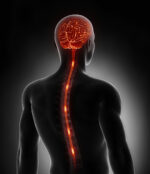Sarcoidosis-associated lung bleeding may be more common than known
High BMI may be a risk factor for DAH with sarcoidosis, study suggests

A lung bleeding condition called diffuse alveolar hemorrhage (DAH) may develop secondary to sarcoidosis more frequently than previously reported, a small study suggests.
Considering the frequency of DAH associated with sarcoidosis reported in the study, “it is essential to consider sarcoidosis in the differential diagnosis of immune-mediated DAH,” the researchers wrote.
Data also suggested a high body mass index (BMI), suggesting excessive weight, may be a risk factor for sarcoidosis-associated DAH.
The report, “Diffuse alveolar hemorrhage secondary to sarcoidosis,” was published in Clinical Rheumatology.
Sarcoidosis is caused by excessive activation of the immune system, leading to small clumps of inflammatory cells called granulomas forming. The disorder usually develops in the lungs and lymph nodes, but can occur in other organs, causing tissue and organ damage.
DAH is a lung condition marked by cough with blood from the lungs and shortness of breath, or dyspnea. Associated with a high rate of complications, it can be caused by certain autoimmune conditions where the immune system goes awry and attacks healthy cells.
“Sarcoidosis as a cause of DAH has been reported; however, the literature remains limited,” wrote researchers at the Mayo Clinic, Jacksonville, who retrospectively analyzed data from patients followed there between January 1, 2000, and June 30, 2022.
Assessing frequency of DAH in sarcoidosis and factors
An initial search for patients with a history of “alveolar hemorrhage,” or bleeding in the lung’s tiny air sacs, and/or “sarcoidosis” identified 142 patients, 55 of whom had DAH and 31 had sarcoidosis.
After excluding people with DAH due to other known causes and those with a history of bleeding disorders, infections, and certain other conditions, the researchers included seven patients with both sarcoidosis and DAH (12% of the DAH patients) in their analysis. Five were women and two were men. Five were white and two were African American/Black. Their mean age was 54 (range, 39-72).
All had pulmonary sarcoidosis. The disease involved the kidneys in one patient and the skin (cutaneous sarcoidosis) in another. All also presented dyspnea, five had cough, four coughed up blood from the respiratory tract, and two required oxygen therapy.
All six patients with available lab results showed anemia, or low levels of hemoglobin, the protein inside red blood cells that carries oxygen throughout the body.
While previous research suggested tobacco use could trigger sarcoidosis-associated DAH, only three of the seven patients had a history of using tobacco. One also used marijuana.
All patients had a BMI — a ratio of weight to height — of 25 or higher, indicative of excessive weight. Three were considered overweight, two were obese, and one was morbidly obese. This suggests having a BMI of at least 25 may increase sarcoidosis-associated DAH risk.
“Additional research is necessary to define the interplay between obesity and sarcoidosis, whether it affects sarcoidosis severity or correlates with development of DAH,” the researchers wrote.
In four patients, the diagnosis of sarcoidosis preceded DAH for several years (range, two to 10 years). Three of them discontinued sarcoidosis treatment and DAH developed between one and three months afterward.
“It is possible that effective sarcoidosis management may lower the risk of DAH,” the researchers wrote.
For the remaining three patients, the two conditions were diagnosed at the same time, “suggesting that high [sarcoidosis] disease activity may contribute to DAH,” they wrote.
All received corticosteroids, a potential anti-inflammatory therapy, to manage their DAH, with four of them recovering well and remaining without symptoms. One patient remained with persistent dyspnea and one had fluctuating symptoms.
Rituximab, an immunosuppressive therapy used off-label in sarcoidosis, was given simultaneously with corticosteroids in one patient and after multiple therapies were unsuccessful at treating DAH in another patient.
The patient in whom rituximab was effective at treating hard-to-treat DAH remained stable for two years until treatment was discontinued due to COVID-19 and the disease relapsed. This patient’s condition stabilized after rituximab was re-initiated.
“To our knowledge, this is the largest group of patients with this association in the English literature,” the researchers wrote, adding their study suggests “sarcoidosis-associated DAH is more common than previously reported,” but more research was needed to clarify its frequency and “contributing factors.”







